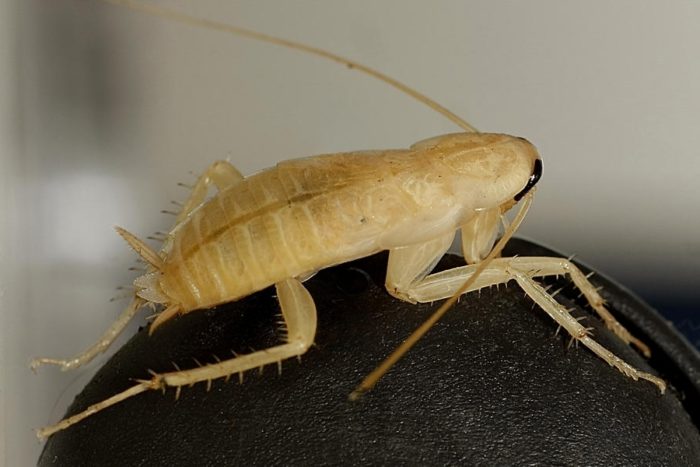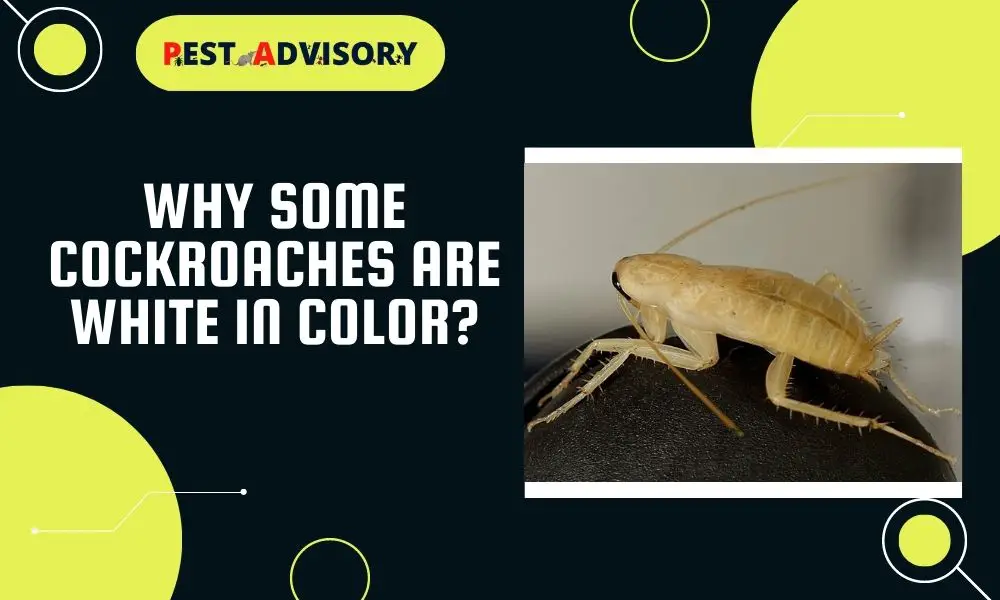All of us hate cockroaches. We are repulsed by their slimy, oily skin and naughty behavior.
Now imagine if your biggest fear suddenly emerged with a white shell around its body.
You would probably mistake it for something poisonous and panic.
Relax.
White cockroaches are not unheard of and are generally harmless.
Read on to find out why some cockroaches are white in color.
Is a White Cockroach an Albino?
Albinism is a skin condition where the production of the pigment melanin is absent or in insufficient quantity, rendering the organism lighter in skin color, hair, eyes, etc.
However, a white cockroach is NOT a result of Albinism.
Unlike Albinism, a biological anomaly, the color of a roach’s exoskeleton is JUST a simple stage in its normal maturity process.
White-colored roaches are a common sighting, unlike Albino cockroaches– which have never been seen.
Why Are Some Roaches White?
A cockroach has three stages during its life cycle: egg, nymph, and adult. As a roach nears maturity and reaches molt, it sheds its outer shell.
This shell primarily protects the infant roaches from predators and removes most of the skin pigmentation the adult discards.
Their bodies naturally replenish the loss of pigmentation through an internal chemical reaction that usually takes a few hours to restore pigmentation.
This pigmentation is an absolute necessity for the roach, as it also regulates its circadian rhythms, which are crucial for its survival.
Are All Cockroaches White at Some Point?
The pigmentation process is a natural progression for all maturing cockroaches.
They are invertebrates, just like all other arthropods, which means they don’t have a spine like humans.
While this spine is the fundamental building block for all humans, roaches do not require a skeleton like other insects.
Therefore, cockroaches don’t have any bones under their thick exoskeletons.
This poses specific survival and evolutionary risks for these pests, who are much more prone to predator attacks and accidental death than others.
For a cockroach’s muscles to function correctly and aid it in basic tasks like operating its legs, wings, etc., they need to be attached to something rigid.
Otherwise, they would be reduced to an immobile blob of flesh and nerves.
Their hard exteriors carry out this task of structural definition.
This exoskeleton is solid and envelopes the roach as it reaches adulthood. It is “set” on the insect and cannot change the size to accommodate its growth spurts.
This exoskeleton provides structure and protects the roach from being squashed or eaten by more giant insects.
To stay protected, roaches undergo a standard process called Molting, where they periodically shed their shrinking shells, replacing them with the largest one according to their new size.
As the old shell is shed, a newer one is already created underneath, just like how our skin forms layers to compensate for an injury.
This shell also retains body moisture during Molting.

Why Are White Cockroaches Rare?
This new exoskeleton is initially rudimentary and soft. It is also devoid of pigmentation.
Once the roach is ready to molt, it cracks open the old skin and crawls out.
But although the new skin is functional, it is still very pliable and lacks the characteristic reddish-brown shade.
During this time, the roaches are at their most vulnerable and always at risk of drying out or being eaten by predators.
Also, the developing shell is not hard enough for the muscles to provide much support, arresting their natural skill of evading predators.
This prompts newly molted roaches to stay hidden in the dark till they are strong enough to emerge.
Due to these reasons, it is uncommon to see white roaches, as they prefer staying hidden from light and activity.
What To Do If You Spot a White Roach?
Discovering roaches is always bad news.
They are vectors of harmful diseases like salmonella and typhoid, and their feces, discarded exoskeletons, and eggs can cause asthma and allergies.
Overlooking a roach infestation can cause food poisoning and diarrhea in your loved ones.
It is always best to hire an exterminator, no matter what color cockroach you spot.
A white cockroach is NOT poisonous, nor is it rare or harmful. It is just a normal transition in their lives and must be dealt with like a regular roach attack.
Final Words
White roaches, albeit uncommon, are nothing to be scared of.
However, it is best to get it checked by professionals to rule out similar-looking pests and avoid a major outbreak.
Keeping your surroundings clean can help you avoid a roach attack and prevent the multiplication of their offspring in your house.
